- home
- news
- scuola internazionale di grafica residency
- trim inversion
- art farm residency
- fire island residency
- skin to skin
- chance shadows
- estocástico
- brentwood boxes
- fjellerup residency
- bay colors
- records del moli
- laid lines
- timepiece
- obsessive decorum
- vessels
- drawing specimens
- california-alentejo
- allegiance
- new york times
- bridges
- nothando's journey
- texts for elena
- workshops
- blog
Residencies in Fjellerup, Denmark, as part of Anna Lise Jensen's Fjellerup i Bund & Grund
Winter 2014 - Fjellerup Strand, graphite on wall; Fjellerup Tang, seaweed on wool
Having arrived in Fjellerup in January for an artist’s residency with Anna Lise Jensen’s Fjellerup i Bund & Grund, I enjoyed many long walks on the wintery beach and was inspired by the patterns in the sand at low tide. These patterns are formed by wave action as the waters recede, much as waves of time wash over and alter the structure and various functions of Strandkroen, a one time fishing icehouse turned restaurant and café. Drawn with graphite, Fjellerup Strand stretches across a wall that faces the sea, effectively de-materializing the architecture.
Fjellerup Tang, hung vertically on the east wall of the café, also brings the outside in. Seaweed was gathered, boiled, formed into sheets, mounted on wool, and set to dry on a wood-burning stove. In both works, the organic features of the Fjellerup landscape are made mysterious and provocative to the eye, inviting the viewer to ponder the unimagined potential within the commonplace. More information can be found here.
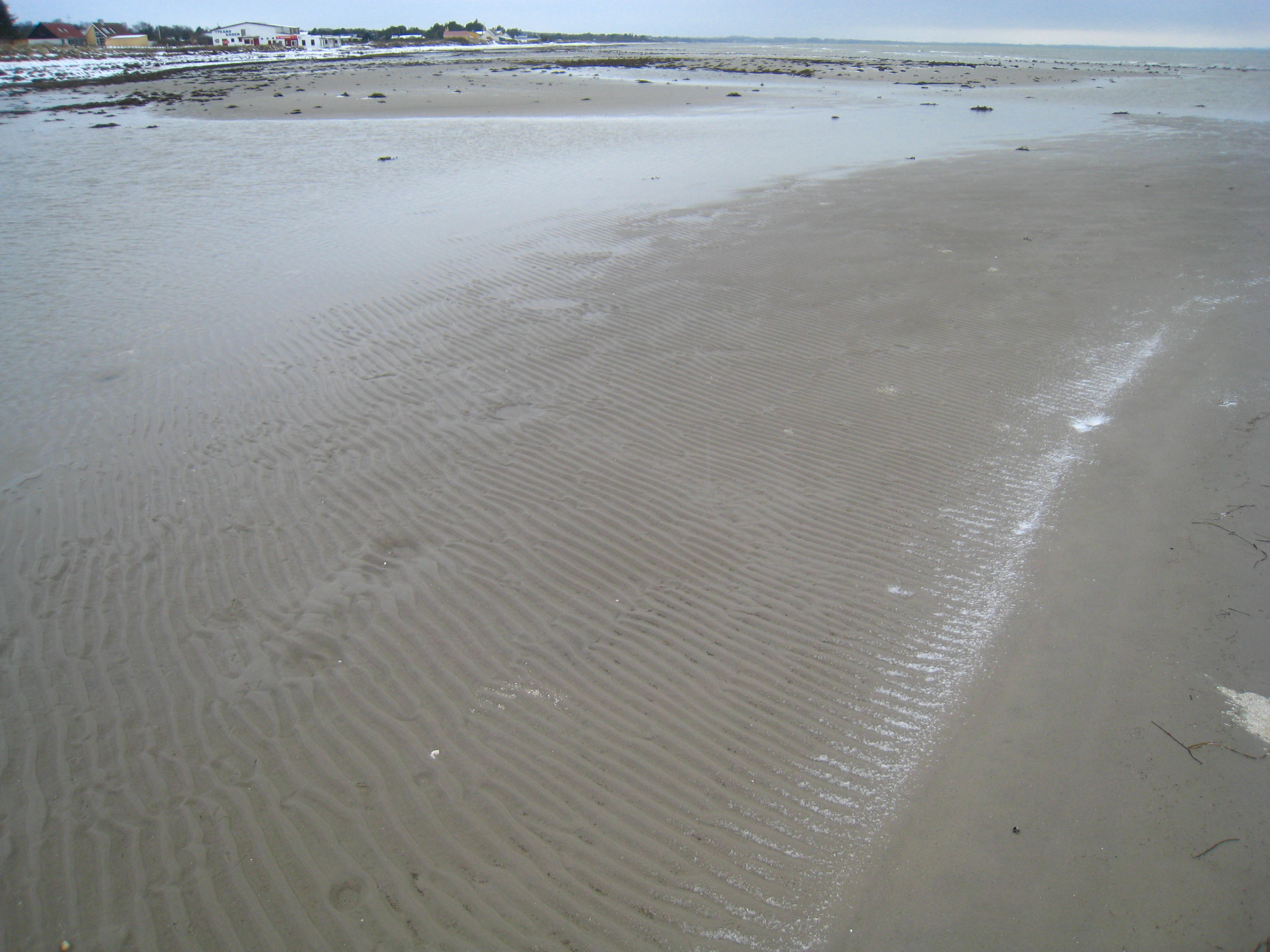
 Low tide on Fjellerup Strand Alyssa at work on Fjellerup Strand. Photos in this column: Anna Lise Jensen
Low tide on Fjellerup Strand Alyssa at work on Fjellerup Strand. Photos in this column: Anna Lise Jensen
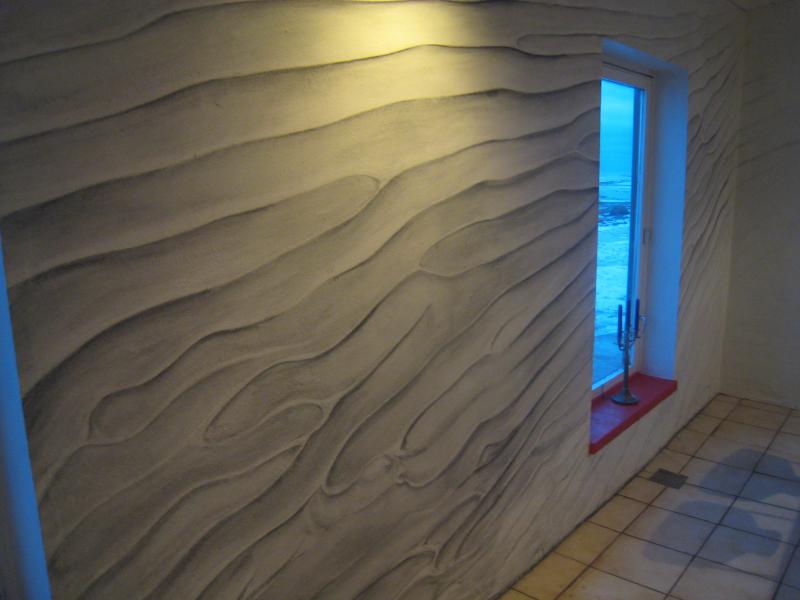
 Fjellerup Strand, details
Fjellerup Strand, details


Fjellerup Tang, detail Fjellerup Tang, installation view. Photo: Anna Lise Jensen

Fjellerup Strand as of winter 2015. Photo: Anna Lise Jensen
Summer 2014 - Strandkroen Palimpsest, paint on wall
 Photo: Anna Lise Jensen
Photo: Anna Lise Jensen
I returned to Fjellerup in July for part 2 of the residency with Anna Lise Jensen’s Fjellerup i Bund & Grund. She obtained permission to remove the generic frisko signs from Strandkroen and invited me to create new signage that would imbue the building with a unique and personal ambience, characteristic of Fjellerup. Strandkroen Palimpsest emerged as I removed the old signs and patched and painted to restore the walls. As I worked, I noticed the worn texture on the plaster and the ordered arrangement of screw holes, ridges in the paint delineating former signs, cracks running down the height of the building, and painted stripes of accents past. These traces tell a visual story of the experience of the building, and I decided to maintain vestiges of each, stabilizing and accentuating features of the wall as I worked. Screw holes and cracks are filled in bright orange, the outer lines of past signs are traced in pale baby blue, and the inner areas of past signs and lettering are painted in glossy, just barely pink.
The words themselves - “Strand Kroen”, “Lœkker Is”, and “Ishuset” ("Beach Tavern", "Delicious ice cream", and "Ice house") - are based on the “Abrams Venetian” font. Designed by American typographer George Abrams and donated to the then Printer of the Royal Danish Court, Poul Kristensen, the font embodies a close relationship of creative collaboration between Denmark and the US.



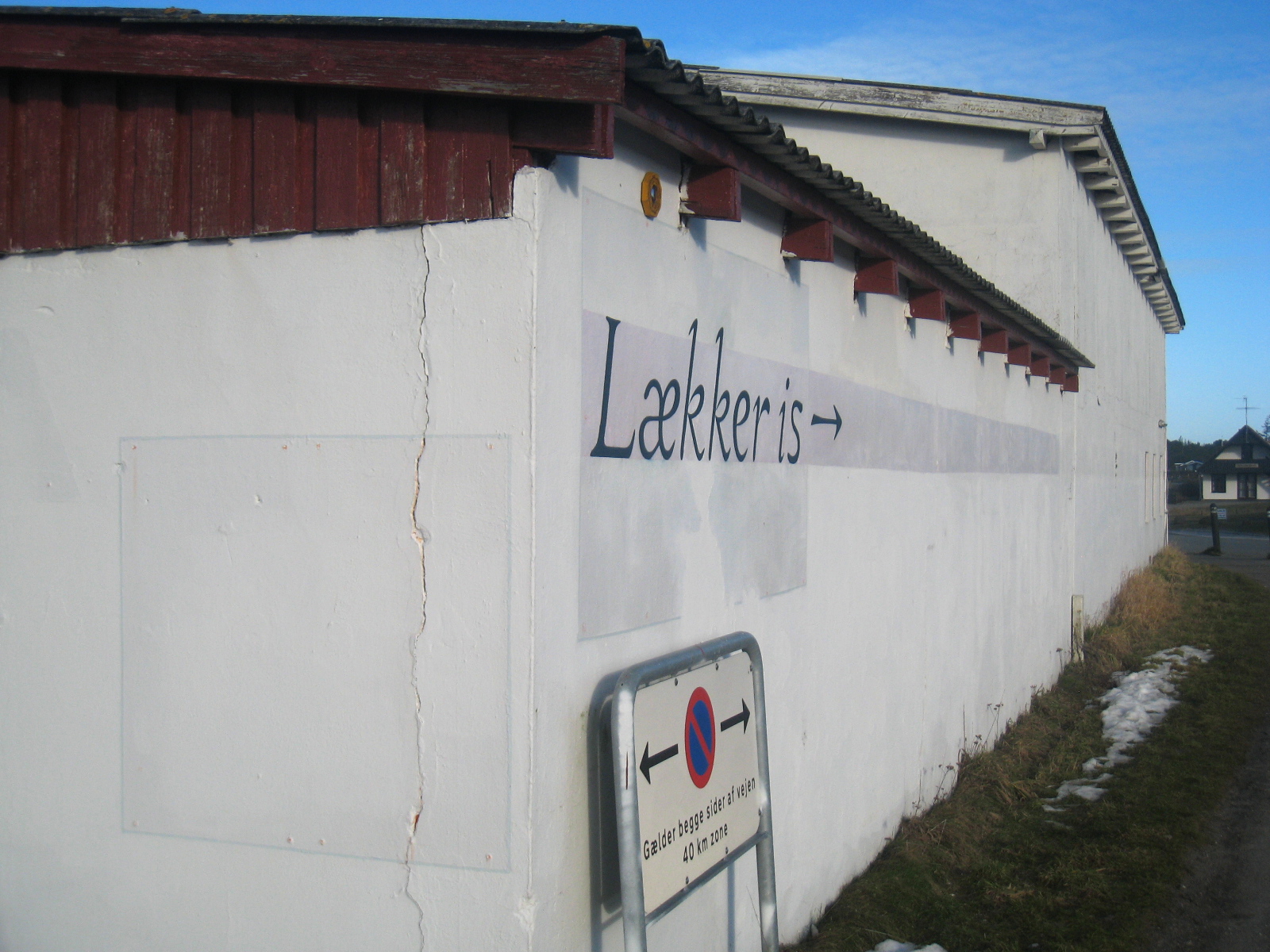
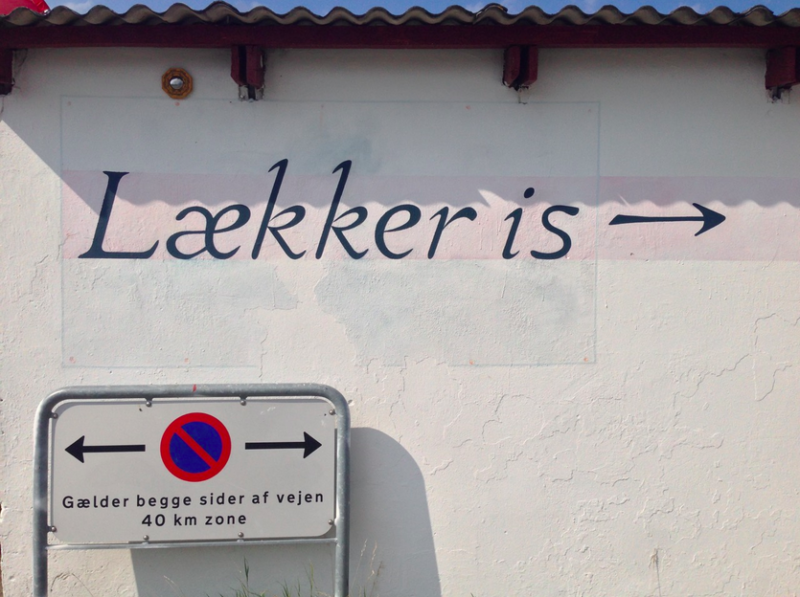


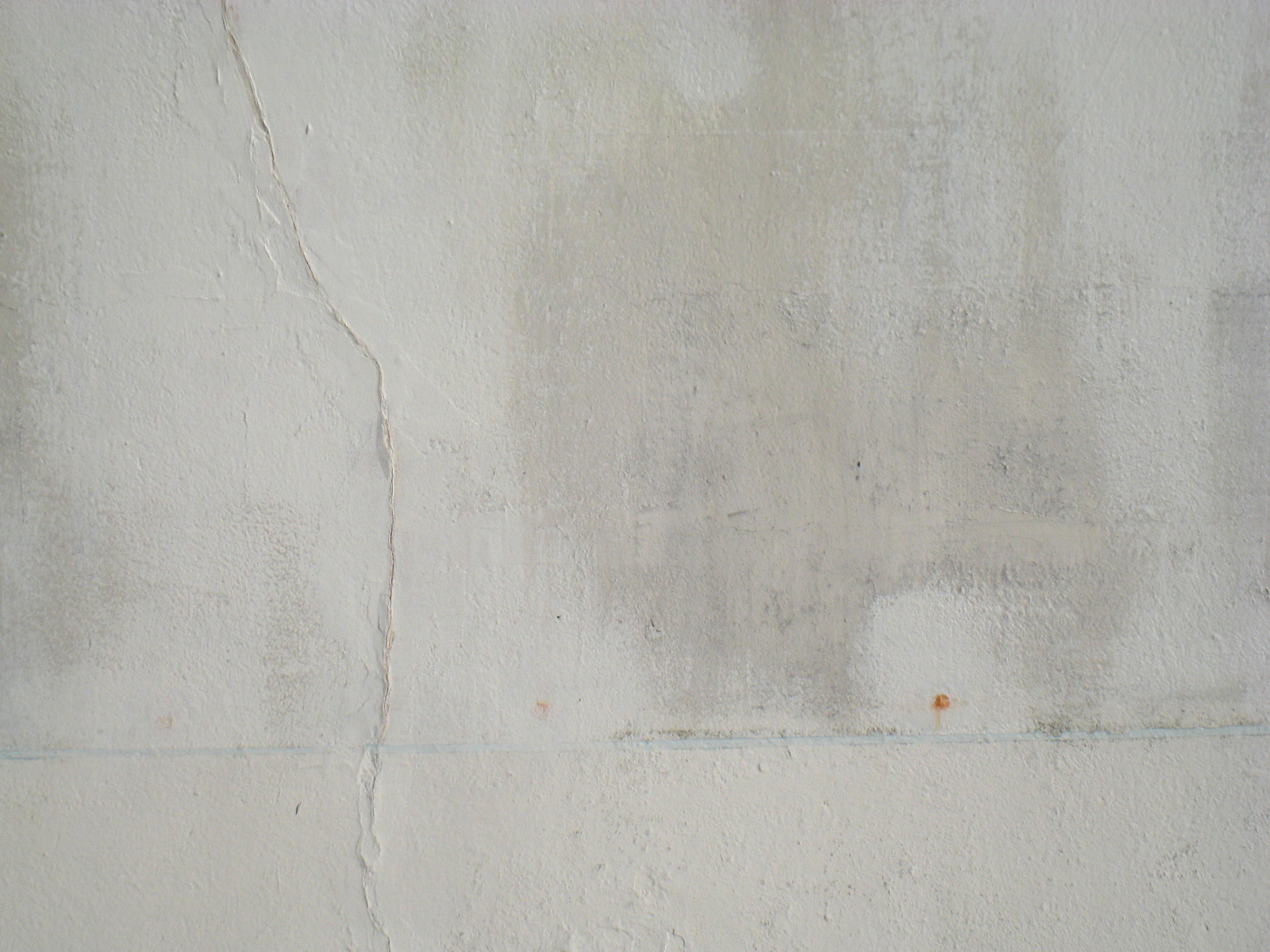


Photo: Bart Spillemaeckers
Summer 2015 - Vandmolekyle, willow
In 2015, Anna Lise invited me back to Fjellerup to participate in Fjellerup i Bund & Grund at Ruth's Have (Garden). She proposed, organized, and created a month of programming and sculpture in Ruth's Have, the garden of the late Ruth Nielsen of the Nielsen family of fishermen on Fjellerup Beach. Under the theme of art and ecology, Anna Lise invited me to make a garden sculpture that could later be moved by the municipality. The ensuing work, Vandmolekyle (water molecule) draws from local knowledge, experience, and hands-on, practical techniques to depict a fantastical vision of that which we take for granted.
The five baskets represent the molecular orbital diagram of water. Each region of space encapsulated by a basket shows the probability of where the electrons of each atom of water are likely to be found; oxygen is at the center, two baskets represent the oxygen-hydrogen bond, and the other two represent the pairs of valence electrons responsible for water's vital properties of solvency, cohesion, and adhesion.
Local basket weaver Inge Madsen in Auning (a town near Fjellerup) grew the willow. To begin, I took a basket weaving workshop from Inge Madsen and Sonja Schultz. As I continued working at Ruth's Have, local visitors came to learn the technique as well, thus creating a conduit of local knowledge and sparking new conversations.
Fish traps have long been made from woven baskets. Vandmolekyle draws on the fishing histories of both the material (basket weaving) and the place (Ruth's Have) to present a new vision of a commonplace substance, inviting the viewer to see with fresh eyes the resources and sites taken for granted in everyday life and to find innovative solutions to the environmental problems that threaten to upset the chemistry of our oceans and to cause sea level rise.

Alyssa with Fjellerup resident, Inge-Lise Møller, who connected us with Sonja Schultz. Anna Lise describing the proposal for Vandmolekyle to Sonja Schultz


Sunday morning workshop with Sonja Schultz and Inge Madsen Alyssa with Sonja Schultz and Inge Madsen
Photos this row: Anna Lise Jensen

 Anna Lise's brother, Niels Peter, trailering the first basket back to Fjellerup Vandmolekyle in progress in the sun room. Photo: Anna Lise Jensen
Anna Lise's brother, Niels Peter, trailering the first basket back to Fjellerup Vandmolekyle in progress in the sun room. Photo: Anna Lise Jensen


Fjellerup resident, Lianne Lassen, learning to weave Ruth's Have neighbor, Kirsten Mogensen, learning the first steps


Fjellerup resident, Antje Fries Harsberg visiting with a friend Vandmolekyle in progress


Alyssa working on Vandmolekyle. Photos this row: Tage Mogensen


Inge Madsen at the opening of Ruth's Have Fjellerup resident, Frants Bro, gave me anchors he made for Vandmolekyle


Photo: Thomas Borg Entrance to Ruth's Have, view of Vandmolekyle, sign hand-lettered by Alyssa Photo: Anna Lise Jensen
Vandmolekyle in Ruth's Have
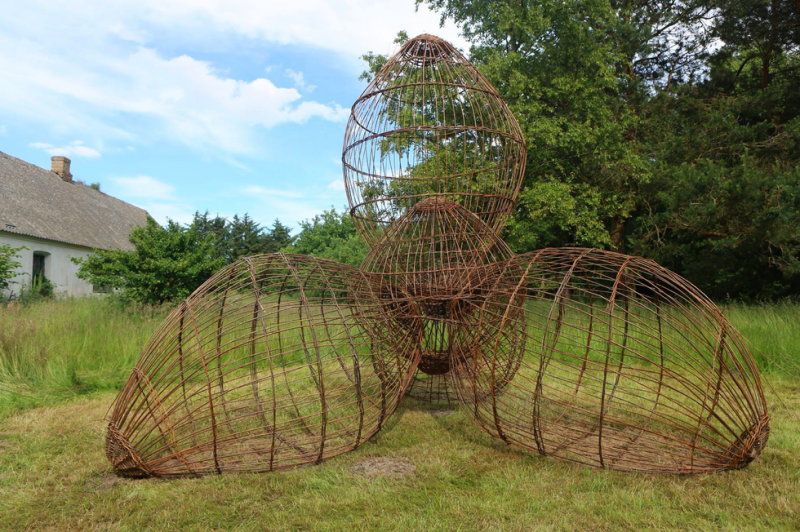
Photo: Anna Lise Jensen
Vandmolekyle as of fall 2016:

Photo: Anna Lise Jensen
A kind, anonymous person must have tried to stabilize Vandmolekyle by tying twine around some of the joints between baskets.






